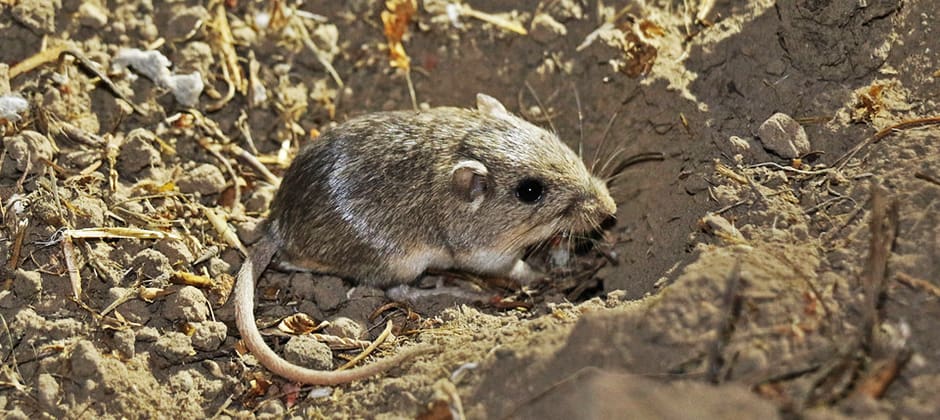Share this article
Exploring genetics to save endangered pocket mouse
Researchers are delving into the genomes of Pacific pocket mice to help inform conservationists about the best ways to recover the federally endangered species, which has only three populations left in the wild.
Despite its name, the Pacific pocket mouse (Perognathus longimembris pacificus) is not closely related to mice at all. A critically endangered subspecies of the little pocket mouse, it’s found in only three isolated locations within about 3 miles of the southern California coast.
“It’s called the Pacific pocket mouse because it looks like a mouse,” said Aryn Wilder, a senior researcher at San Diego Zoo Global who led a recent study on the rodent. “I think it’s actually more closely related to beavers in some phylogenies.”
Its range used to stretch from the Mexican border to Los Angeles, Wilder said, but around the 1930s, many of its populations began to disappear. “They were thought to be extinct for a while,” she said. “Then, they were rediscovered in the ’90s, and emergency listed under the Endangered Species Act.”
By then, only three populations remained: Two at Marine Corps Base Camp Pendleton and one about 36 miles away in Dana Point, a coastal city in Orange County, separated from the others by urban development.
The San Diego Zoo began a conservation breeding program for the species in 2012, taking individuals from each population as founders.
In a study published in Conservation Genetics, Wilder and her colleagues looked at microsatellite and mitochondrial DNA of the individuals bred in the zoo’s program to help them determine the best ways to reintroduce the animals to the wild. “The initial reason [for the conservation breeding program] was to have a source of individuals to use for reintroduction in parts of their range where they’re no longer found,” she said.
They found that the pocket mice from Dana Point — the smallest population and the one suffering the most from inbreeding — became less and less represented in the genetics of breeding program over time. Researchers believe the reason the Dana Point population’s genetics decreased has to do with genetic load — the buildup of harmful mutations in the genome.
“All populations have mutations in them,” Wilder said. “But normally natural selection does a good job of keeping harmful mutations at low frequency, so they’re rare in the population.” When populations get really small, though, natural selection doesn’t work so well, she said.
The Dana Point offspring did better when they were bred with other populations, however. As a result, she suggests managers consider boosting genetic diversity by moving Camp Pendleton pocket mice to the Dana Point population.
Having now sequenced the genomes of almost every individual in the conservation breeding program, Wilder said her research will shed light on the history of the three wild populations; how well the conservation breeding program captures genetic diversity, including harmful diversity; and how much their genes have fluctuated in the breeding program over time.
That information can guide not just Pacific pocket mouse reintroduction efforts, she said. It could also help conserve other endangered species by showing what determines the success of “genetic rescue,” where managers move individuals between populations to increase genetic diversity.
“It’s been a really successful strategy for increasing population health, but it does potentially come with risks,” she said. “The Pacific pocket mouse can help us understand those tradeoffs.”
Header Image: Researchers looked at the genomes of endangered Pacific pocket mice. Credit: Joanna Gilkeson/USFWS








